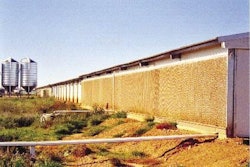India had one big dose of the highly pathogenic strain of avian influenza (AI), H5N1, first hitting western state of Maharashtra in February 2006. By the time it had finished, more than one million birds had been culled. India was declared AI-free in August 2006 and has maintained this status ever since, but is now surrounded by countries where the disease is endemic or outbreaks continue to occur.
H5N1 is entrenched in China and Myanmar and has re-surfaced in Pakistan. The disease has now been reported across the eastern border in Bangladesh on a poultry farm in Savar near Dhaka, which means India is surrounded by ongoing outbreaks on all sides. Other Asian countries including Afghanistan, Russia, Japan, South Korea, Thailand, Vietnam and Indonesia are sporadically if not continually affected.
“We are vulnerable to H5N1 at any time from a number of sources,” said Minister of State for Agriculture Kanti Lal Bhuria, “and especially since India is on the routes of three major flyways for migratory birds. Indian government has put its Animal Husbandry Department on alert to monitor the threat of bird ‘flu along its north-eastern border with Myanmar during ongoing outbreaks there.”
Surveillance continues at state and central levels with focus on bodies of water where wild migratory waterfowl congregate. Farmers are advised to keep poultry indoors to prevent mingling with wild birds and cross-infection.
Additional precautions include a ban on imports of poultry from countries reporting highly pathogenic or low pathogenic AI. The wide-ranging ‘play safe’ ban came into effect on 14 March and includes live chicks, ducks, turkeys, wild and domestic birds and their semen, as well as eggs and feathers. Also included are poultrymeat, live pigs and pig meat products, and products of these animal origins destined for feed, agricultural or industrial use.
India is well prepared with its own poultry vaccine but as yet there have been no commercial ‘takers’ says ‘The High Security Animal Disease Laboratory’ which developed vaccine in July 2006 at the behest of the Indian Council of Agricultural Research (ICAR). The vaccine is based on virus samples collected from Western Madhya Pradesh, Gujarat and Maharashtra and the immune response is good, affording over 90% protection, claims the institute.
Surveillance is also focused on western border-states like Rajasthan and Gujarat following outbreaks in Pakistan earlier this year. Just as Pakistani bird traders in Rawalpindi were celebrating the end of the AI scare there, H5N1 was isolated from dead crows in the Pakistan capital, Islamabad (20 March).
H5N1 outbreaks in peacocks (peafowl) in North-West Frontier Province and Marghazar Zoo in Islamabad have worried India and not only for its own zoos like Ahmedabad Zoo in Gujarat where extra nutritional and disinfection measures in place. Peacocks are kept in large numbers as pets and as religiously revered birds in India and Pakistan. Although poor flyers, peacocks are quite capable of hopping over border fences.
Bans on live poultry and poultry products should be enough to protect India against this avenue of H5N1 introduction but domestic birds like peacocks and ubiquitous wild avian scavengers such as corvids, e.g. crows, could pose other and less easily managed threats to India’s poultry industry.

















